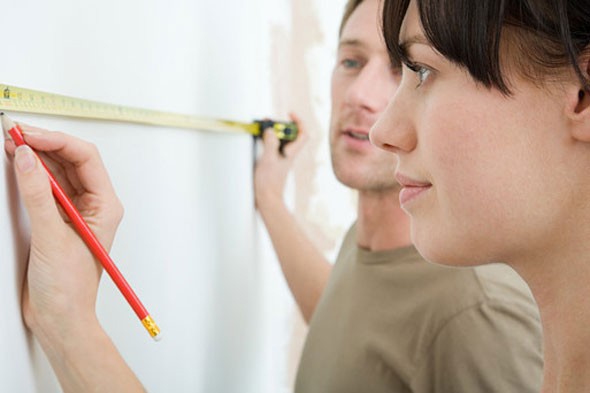If you’re suspecting that the dark spots on your walls are mold, you’re probably right: you know what it looks like, the smell can’t be mistaken for anything else, and if you’re having problems with your respiratory system – cough, trouble breathing and so on – it’s time to do something. It is mold, and it won’t go away by itself.
Do you need to call the professionals?
Usually, if the affected area is smaller than 10 square feet, you should be able to remove it all by yourself; however, if you suspect that it may have penetrated the wood or the walls, it may be the job for a professional. To be on the safe side, it’s wise to call them either way, if for no other reason, then just for consultation, to make sure that what you see on the surface is the only area that is affected.

When you see that the problem is much bigger, don’t hesitate: mold spores will spread throughout your home and before you know it, you will need a serious intervention. There are DIY testing kits on the market, but they can provide false results, and mold problem should be taken seriously.
If it’s the DIY way – here’s how:
In most cases, you will be able to handle the situation by yourself, but you should know a few things before you go there.
First of all, you should be aware that mold spores like to spread, and they can be really bad for your health if you inhale them. That’s why before you do anything else, you should mist the affected area so that the spores don’t fly around the room. Also, make sure that you’ve sealed the room you’re cleaning so that it doesn’t spread to the rest of your home – use duct tape and a plastic sheet and cover all openings, including vents, and open a window and place a small fan there to direct the spores outdoors.
Protect yourself – wear dust mask and goggles, and a pair of gloves. It’s also recommended that you wear old clothes that you will dispose of when you’re done.
Now to the cleaning part: take a stiff brush, some mild soap and water and clean everything you can see. Dispose of the materials you’ve used, and apply the disinfectant. There are many products that are great disinfectants, but if you prefer a less aggressive and more natural approach, you can make your own mix, we’ll talk about it in a minute – just a quick note before that: spray the surrounding area too, to make sure that you’ve killed all the remaining spores, rinse with warm water and let the area dry completely with proper circulation.
DIY disinfectants
The best natural disinfectants are baking soda, tea tree oil, vinegar, and grapefruit seed extract. Vinegar and baking soda are less expensive than the other two, but almost just as effective. To reduce the smell of vinegar, you can add a few drops of an essential oil (lavender or eucalyptus).
Tea tree oil has a strong smell and grapefruit seed extract is more expensive but odorless; you can use either with equally effective result. You will have to mix them with water: with tea tree oil – 1:1 ratio oil to water, and with grapefruit seed extract add 20 drops of extract to two cups of water. You don’t need to rinse these solutions after you spray them on the affected area.
After you’re done, monitor the treated area. If the mold spots reappear, repeat the process (you may have to do it a few times). But it’s essential that you get rid of mold in your home, because if you’re exposed to it for a long time, it can cause serious health problems, not to mention that the mold destroys the surfaces on which it appears.
Helen Marino is a part time staff writer for a NYC mold removal company, MoldBusters. You can connect with Helen on Google+ here.
How To Remove Mold From Your Home – The DIY Way

